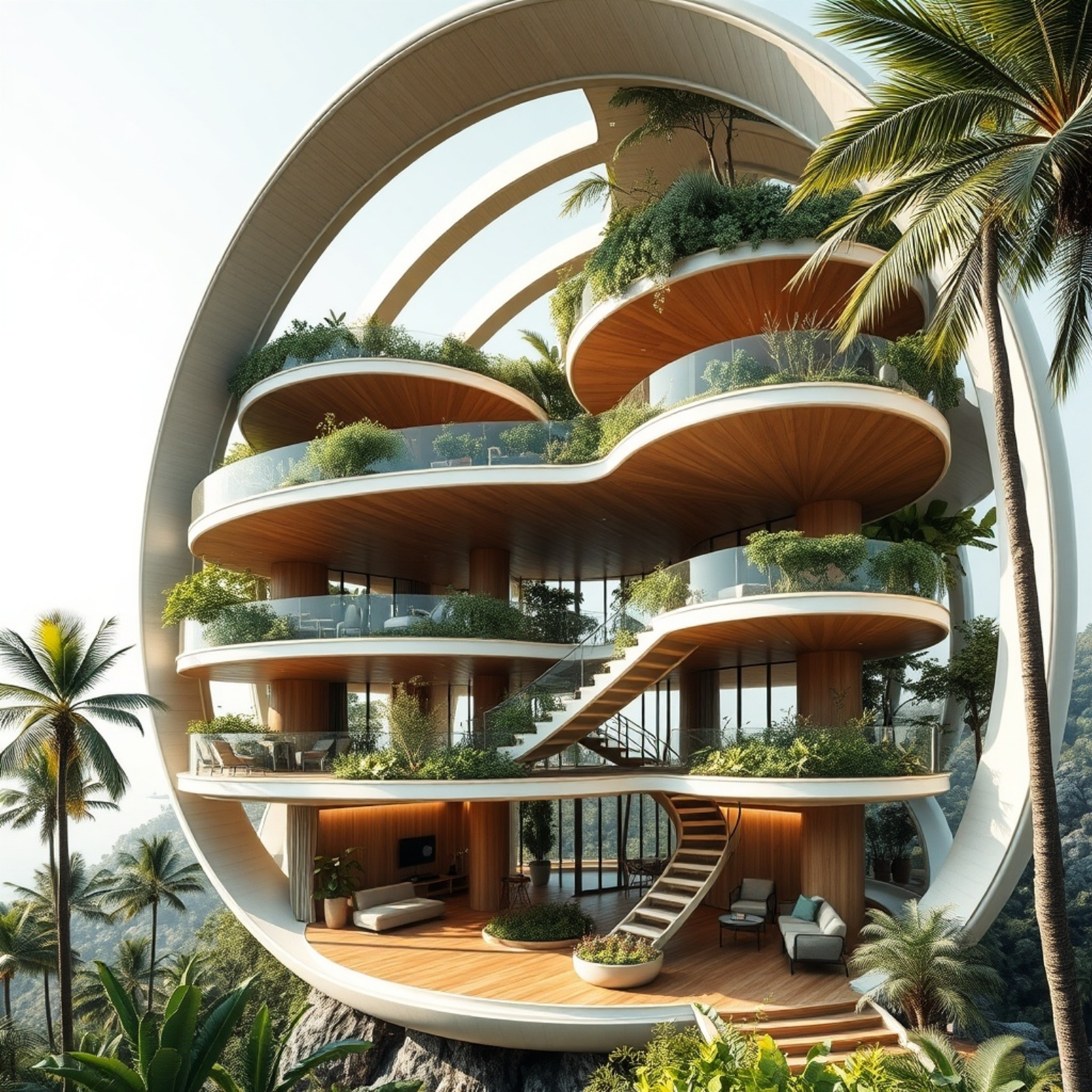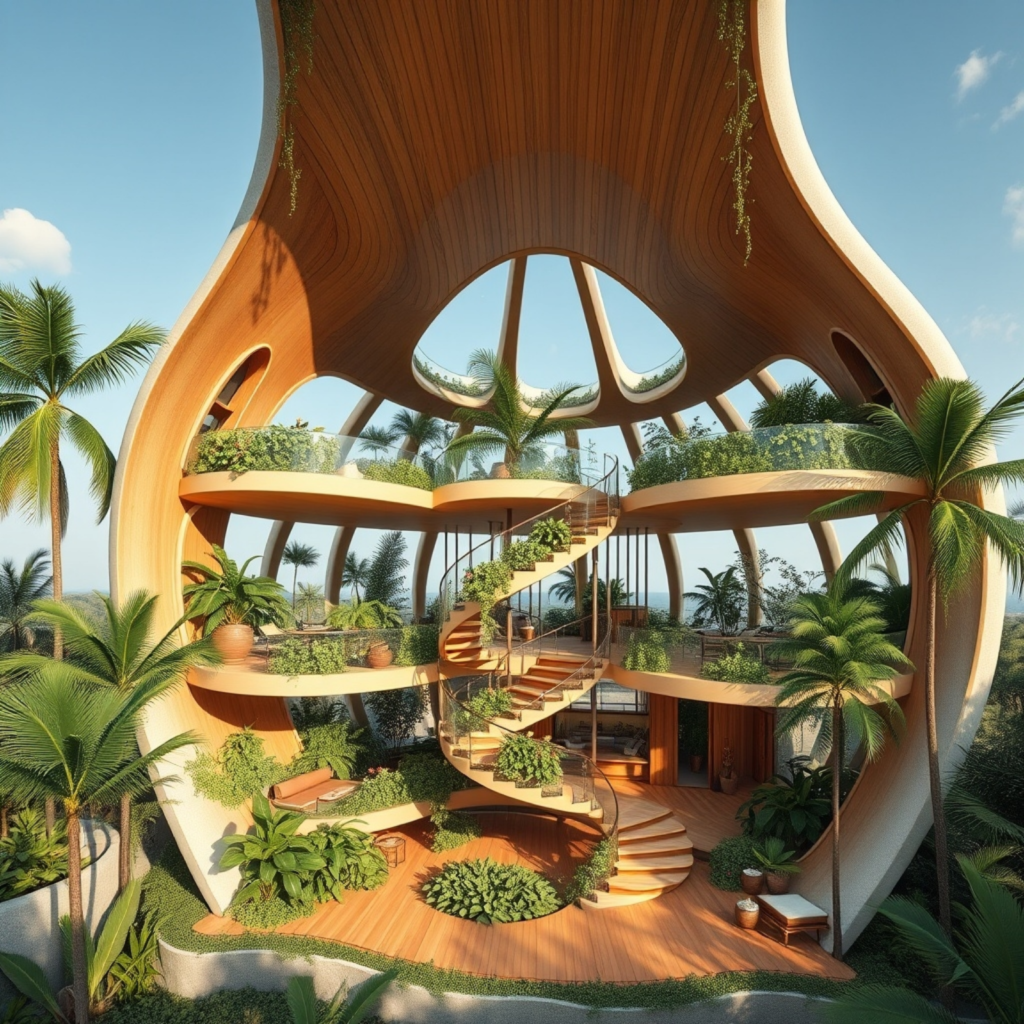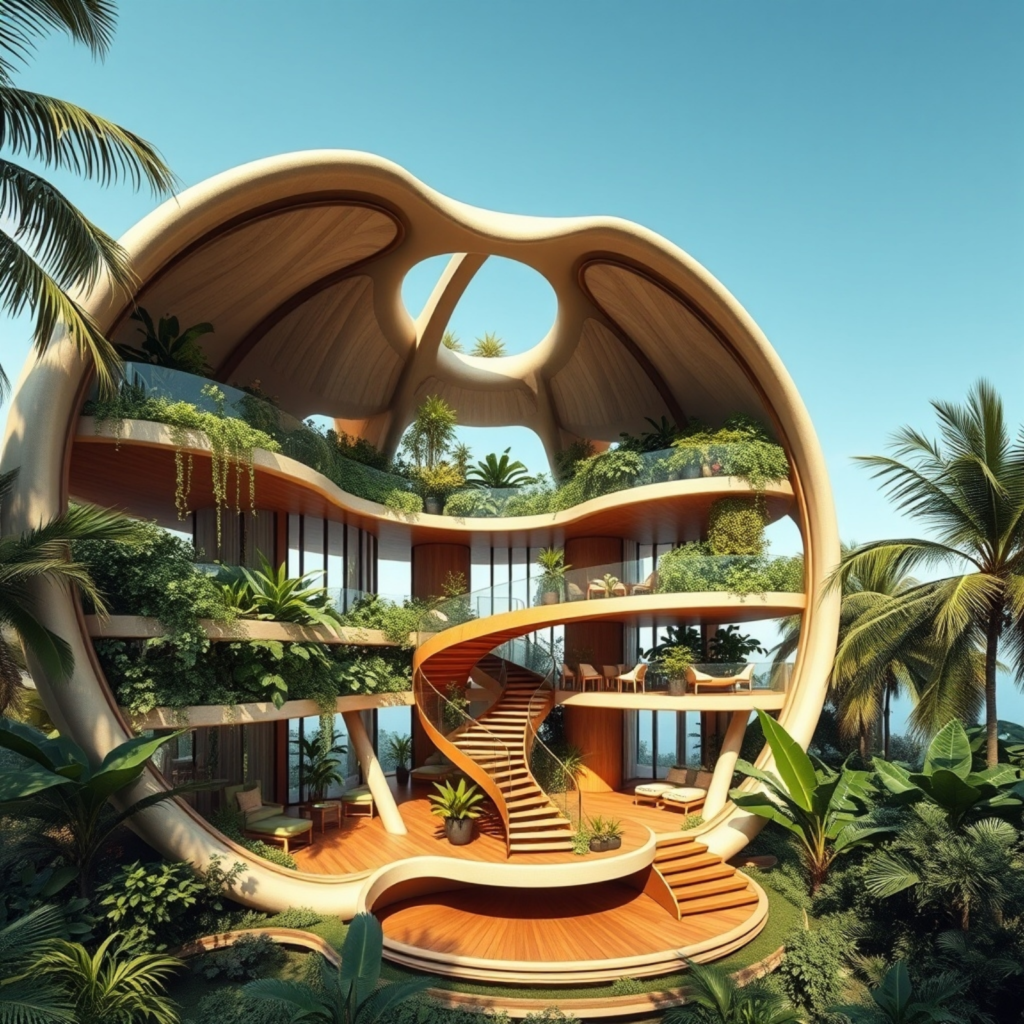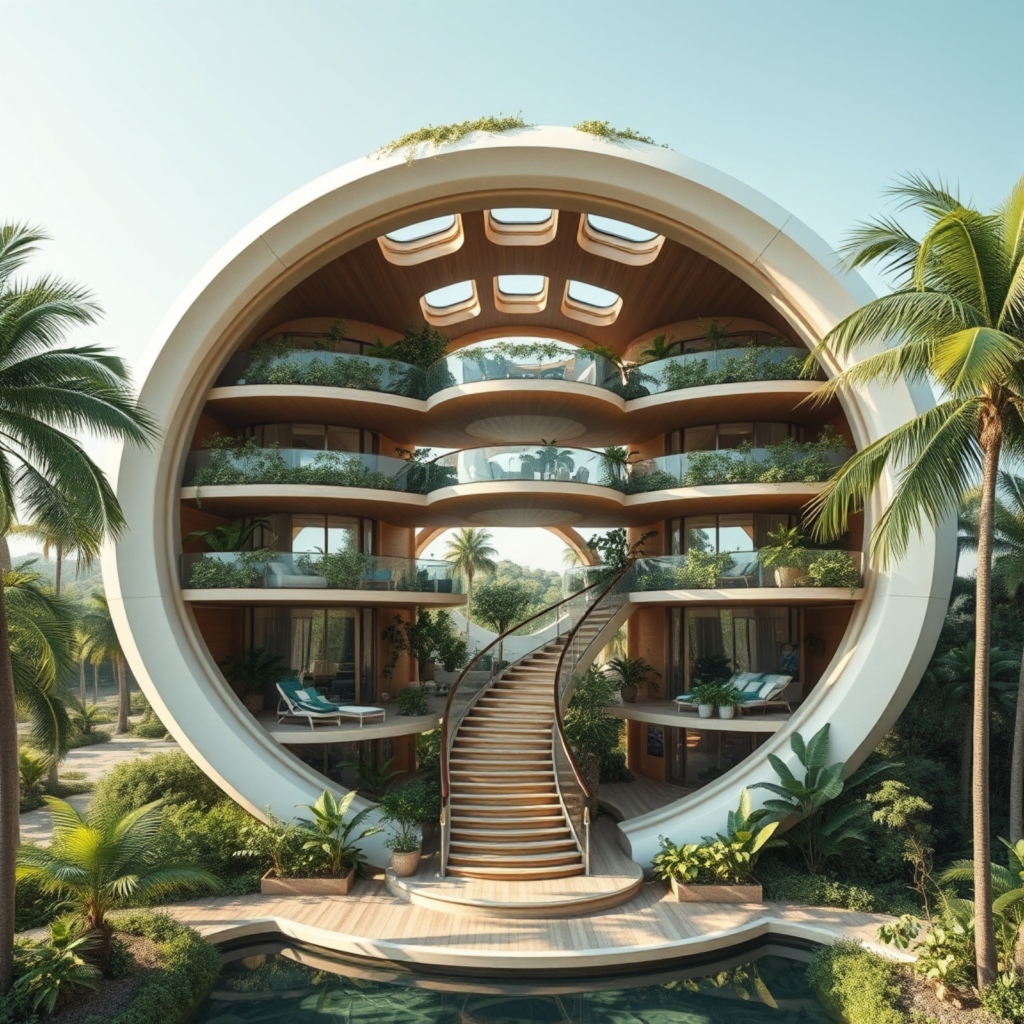

Introduction: In a world where architecture is continuously evolving, blending natural elements with futuristic design has become a key focus. The architectural marvels presented in these images showcase the epitome of organic elegance — structures that harmonize with tropical surroundings, seamlessly integrating nature into their design. These futuristic buildings embody innovation and sustainability, offering a glimpse into the future of tropical residential architecture.
Design Features:
1. Curved and Fluid Structures: The designs feature sweeping curves and organic shapes, creating a fluid, dynamic appearance that mimics the natural landscape. The open structures allow for natural light and air circulation, reducing the need for artificial energy sources and offering a unique experience of tropical living.
2. Sustainable Biophilic Design: Each level of the building incorporates greenery, from vertical gardens to planted terraces, reflecting the principles of biophilic design. These green spaces not only improve air quality but also provide natural insulation, keeping the interiors cool while promoting a sustainable lifestyle.

3. Open Central Atriums: The heart of these designs is the open atrium, where nature and architecture meet. These open spaces serve as a communal area that connects the various levels, fostering a sense of community while allowing light and ventilation to flow throughout the structure.
4. Organic Materials and Aesthetic Harmony: Natural materials like wood and stone are used extensively, blending seamlessly with the lush, green environment. These materials not only enhance the building’s aesthetic appeal but also contribute to the sustainability of the structure by reducing the carbon footprint.



Impact on Future Architecture:
These designs represent the future of tropical architecture, where buildings are more than just shelters; they are ecosystems that integrate harmoniously with nature. The focus on sustainability and organic forms not only addresses environmental challenges but also enhances the quality of life for residents, offering an immersive experience of nature within the urban environment.
As more architects adopt biophilic principles, structures like these are set to become more common, shaping a future where cities are greener, more sustainable, and more connected to the natural world.

More Latest Posts
- Islamic Futuristic Architecture: Blending Tradition with Modernity for Sustainable Cities
- Futuristic Architecture and Eco-City Innovations: Design Ideas and Tips for Architects
- Elevate Your Space with Modern Egg Chair Designs
- Modern Homes and Interior Design Tips: A Guide for Homeowners and Designers
- Modern Home Architecture: Design Tips for Builders, Architects, and Investors
